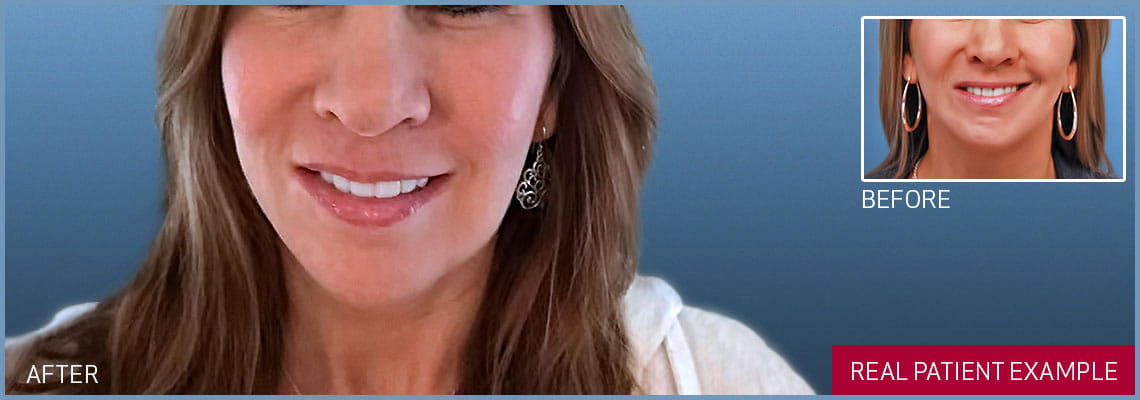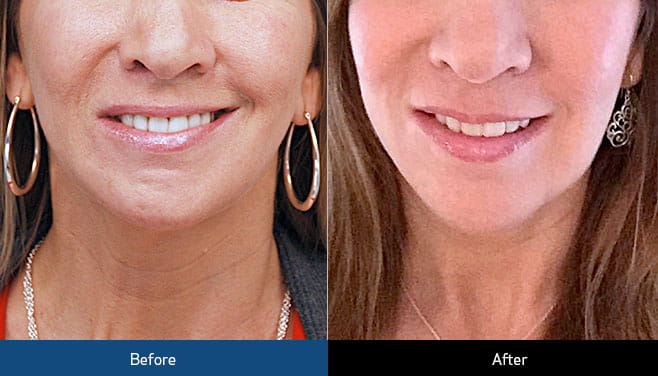Botox

Botulinum toxin type A, commonly referred to as Botox, is an injectable compound that produces temporary muscular weakness. Botox is widely utilized by dermatologists and cosmetic surgeons as a means of reducing facial lines and wrinkles. In addition to its role in anti-aging therapy, Botox has proven effective in treating some of the side effects of facial paralysis (synkinesis, hemifacial spasm, blepharospasm).
During the recovery phase of Bell's Palsy, the regenerating nerve fibers initially migrate through a common channel (main nerve trunk). Eventually the facial nerve will start to divide into a series of branches bound for either the brow, eye, cheek, lips or neck and migrating nerve fibers will be forced to select a path. Unfortunately, some nerve fibers that the brain has earmarked for a particular function may ultimately grow to the wrong location.
For example, a collection of nerve fibers the brain has deemed responsible for smiling may grow to the muscles at the corner of the mouth and eyelid. In this case an attempt to smile will produce movement of the lips and closure of the eye. These abnormal facial movements are referred to as synkinetic function. Hyperactivity and synkinetic function of the facial muscles often responds favorably to Botox injections.

BOTOX Treatment
Patient is treated using BOTOX for her over active depressor anguli oris muscle, which improved her smile symmetry. Click here to enlarge photoTechnique
Botox injection is a quick procedure that is performed in the office. The region above the overactive muscle is cleansed with alcohol and small volumes of Botox are injected with limited discomfort. Highly sensitive regions such as the eyelids can be treated with topical anesthetic cream prior to injection.
Recovery
Decreased muscle function should start to become apparent 12-18 hours after the injection and the maximum effect is usually achieved by the end of the first week. One month after injection some return of muscle function may be present but the beneficial effect of Botox injection typically lasts for 3 to 6 months. The length of the Botox effect may increase with repeated use.
Although rare, problems can develop with Botox injection. These temporary difficulties are most frequently encountered with injection around the eyes where drooping of the upper eye lid (ptosis) or double vision can occur. Fortunately these problems are temporary and tend to resolve as the Botox effect subsides.
real patient case studies
Learn how facial paralysis surgery and functional restoration can help you.
